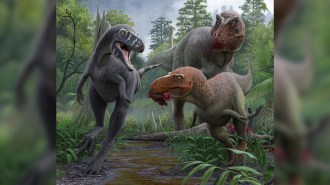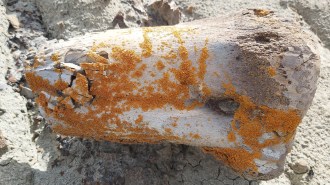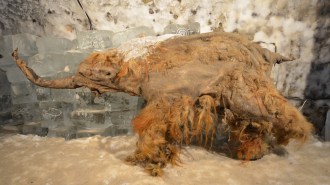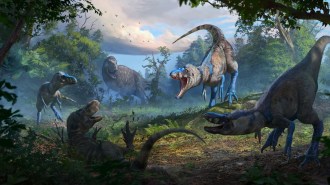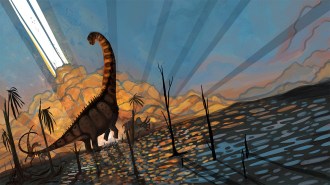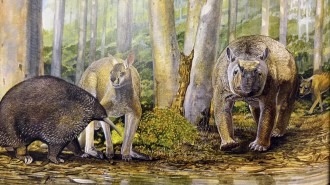Asian amber yields oldest known bee
A tiny chunk of amber from Southeast Asia contains the remains of a bee that’s at least 35 million years older than any reported fossil of similar bees.
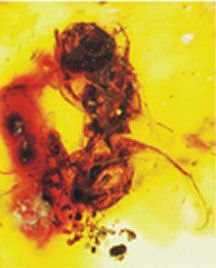
The amber nodule that entombs the newly described Melittosphex burmensis was among 100-million-year-old rocks in northern Myanmar. The male bee measures nearly 3 millimeters long, about the size of a modern-day sweat bee, says Bryan N. Danforth, an entomologist at Cornell University.
Despite its antiquity, the creature has many features of modern bees, including a full-body coating of small, branched hairs, Danforth and his colleague G.O. Poinar Jr. of Oregon State University in Corvallis report in the Oct. 27 Science. However, the bottom section of each hind limb is long and slim, as it is in the ancient group of wasps from which scientists propose bees have evolved. A plate on the underside of the bee’s abdomen, which modern ground-dwelling bees use to pack soil as they burrow, hints that the species lived underground.
Male bees don’t forage for pollen, and this specimen lacks the specialized pollen-gathering structures that a female of its species probably had, says Danforth. Nevertheless, several pollen grains adorn the fossil. Those grains probably stuck to the bee as it searched for nectar, he notes.
Scientists haven’t had direct evidence that bees lived 100 million years ago, but they’ve long suspected that the creatures were around. That’s because eudicots, a group of flowers that today largely depends on bees for pollination, first appeared about 120 million years ago, says Danforth.

